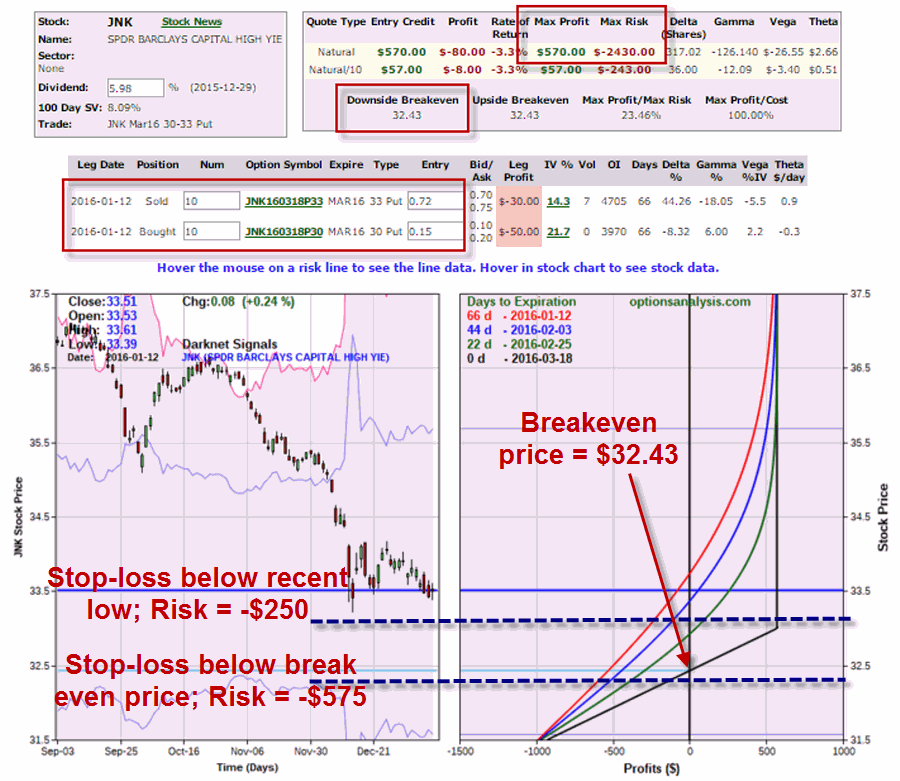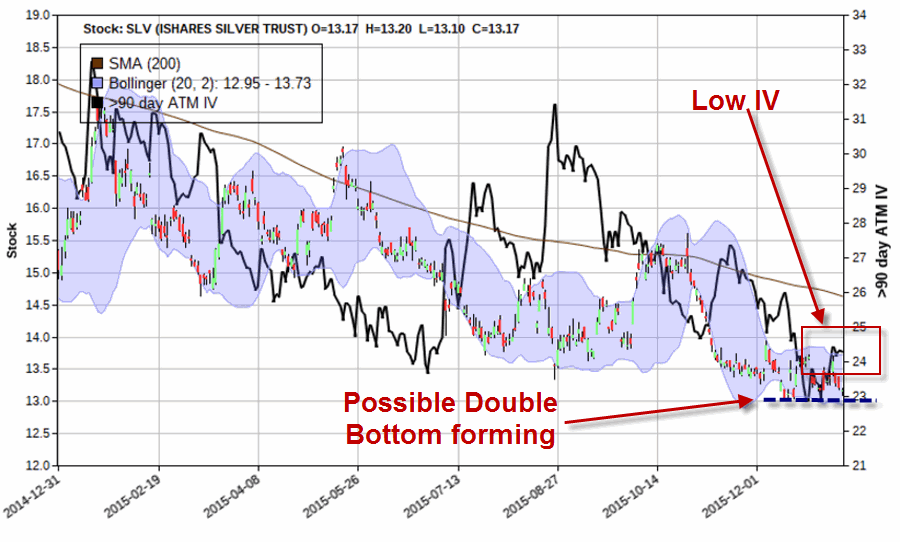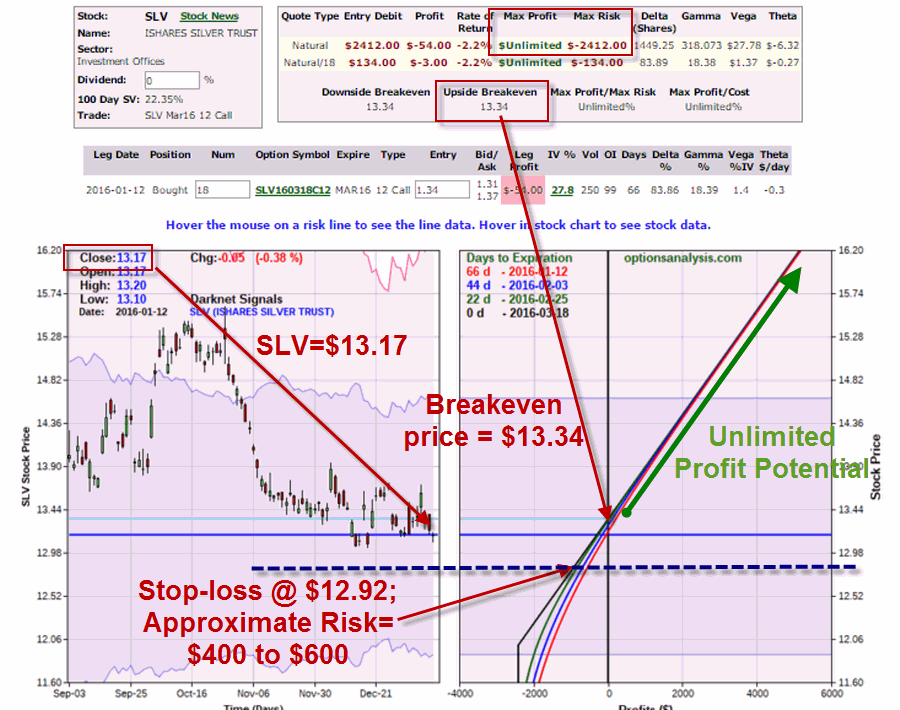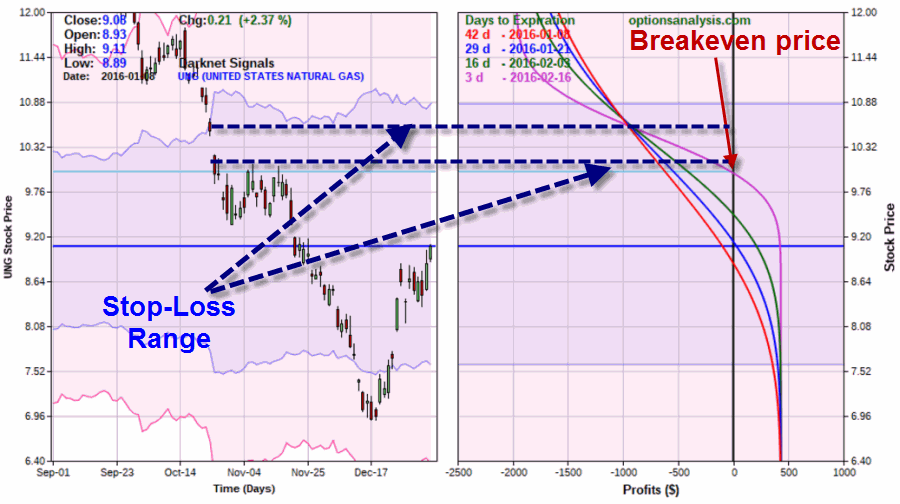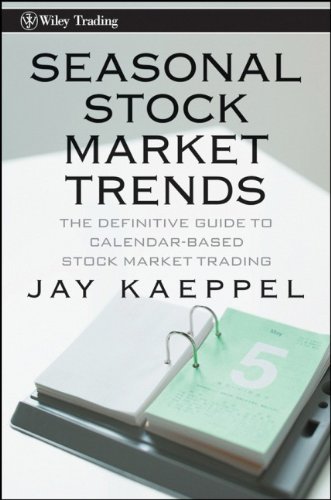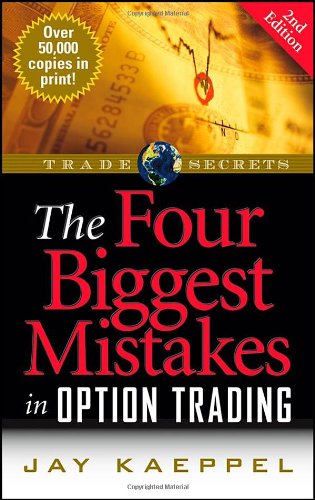As I said here I hope to offer more example option trades as a form of education. Yesterday I highlighted examples using options on JNK and SLV. SLV did well on Day 1, JNK did not. So a quick update on JNK.
Ticker JNK
First a quick reminder that the trade highlighted here using put options on JNK was clearly marked “example” and not “recommendation”. Part of the reason is highlighted in Figures 1 and 2.
One of the “rationale” for the bull put spread highlighted originally was the notion that JNK “may be in the process of forming a double bottom.” A person could look at the chart in Figure 1 and say “OK, I could see it…maybe”.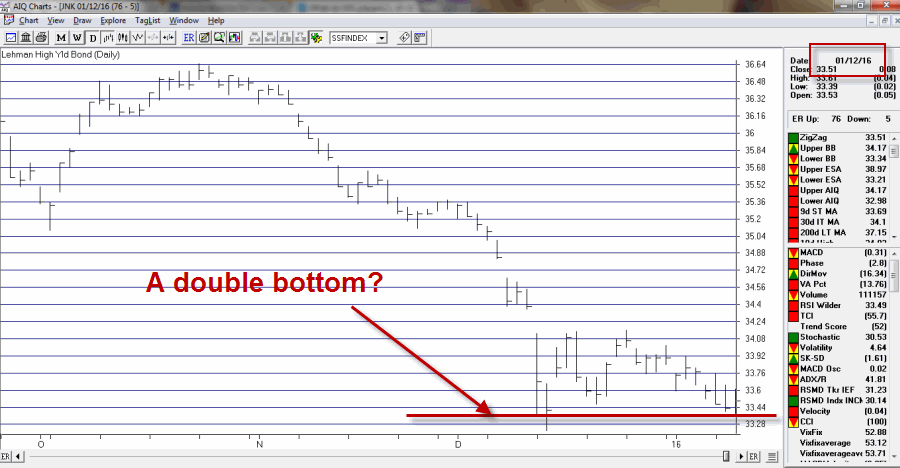 Figure 1 – JNK Double Bottom? (Courtesy: AIQ TradingExpert)
Figure 1 – JNK Double Bottom? (Courtesy: AIQ TradingExpert)
And then comes the harsh reminder that attempting to pick bottoms is fraught with peril. On 1/13 – and as you can see in Figure 2 – JNK plunged right through the old low into new low territory.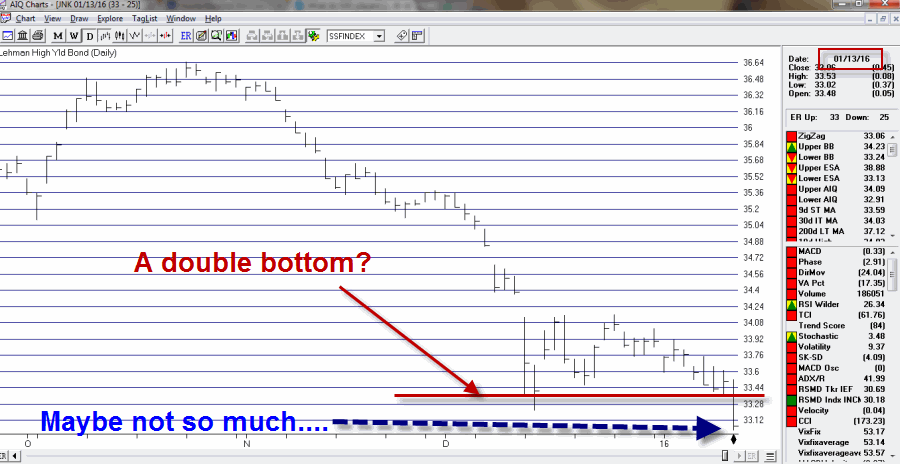 Figure 2 – JNK Double Bottom – NOT? (Courtesy: AIQ TradingExpert)
Figure 2 – JNK Double Bottom – NOT? (Courtesy: AIQ TradingExpert)
So Now What
Since this trade was offered as an example, the simple thing to do would be to simply say “I would never make that silly mistake” and move on. But the purpose of education examples is – um, well, education. And since we all make mistakes at times it can be instructive to consider the possible course(s) of action should you find yourself in a “bad scenario”. So let’s consider where to go from here.
On 1/13/16, JNK closed at $33.06. In the original article I suggested two potential stop-loss levels:
Stop-Loss level #1: $32.92 – almost there and highly likely to be hit. This stop loss level will “stop the bleeding” at a reasonably small level (likely somewhere in the -$400+ range).
Stop-Loss level #2: Slightly under $32.43 – For those who can handle the emotional stress of holding onto a trade that goes south immediately – and potentially stays south – there is one interesting thing to note about the prospects for this trade. As you can see by looking at the black line in Figure 3, this trade is still technically in the “Profit Zone”. In other words, as long as JNK stays above $32.43 it will ultimately show a profit.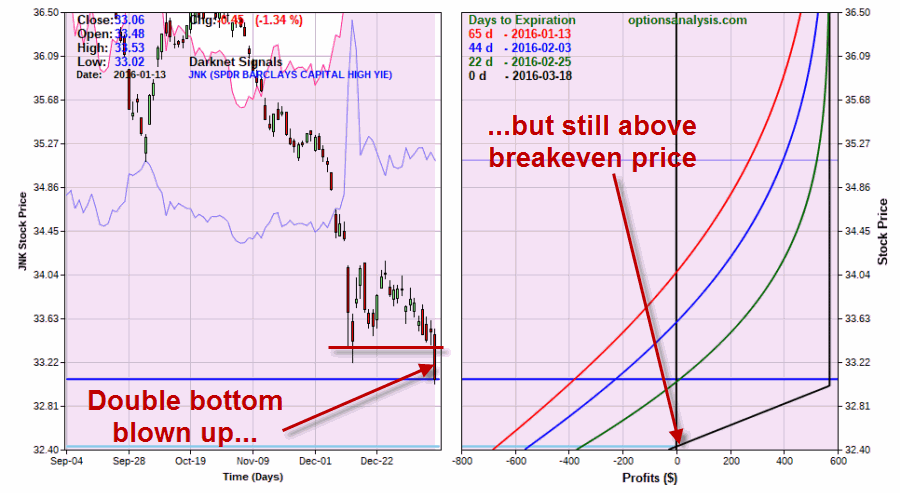 Figure 3 – JNK Bull Put Risk Curves (Courtesy www.OptionsAnalysis.com)
Figure 3 – JNK Bull Put Risk Curves (Courtesy www.OptionsAnalysis.com)
Summary
So what is the proper course of action here?
*Cut bait sooner than later since the original reason for the trade (i.e., a potential double bottom) appears to have evaporated?
*Hold on as long as JNK remains above the trade’s breakeven price of $32.43?
*Something else?
Here is where trading gets hard – because there is no right or wrong answer. The keys are to make your bet decision, stick with it and to never regret or second-guess once you’ve made your decision.
Hey, this lousy example trade might be useful after all…..
Jay Kaeppel

